Mia Grosshart
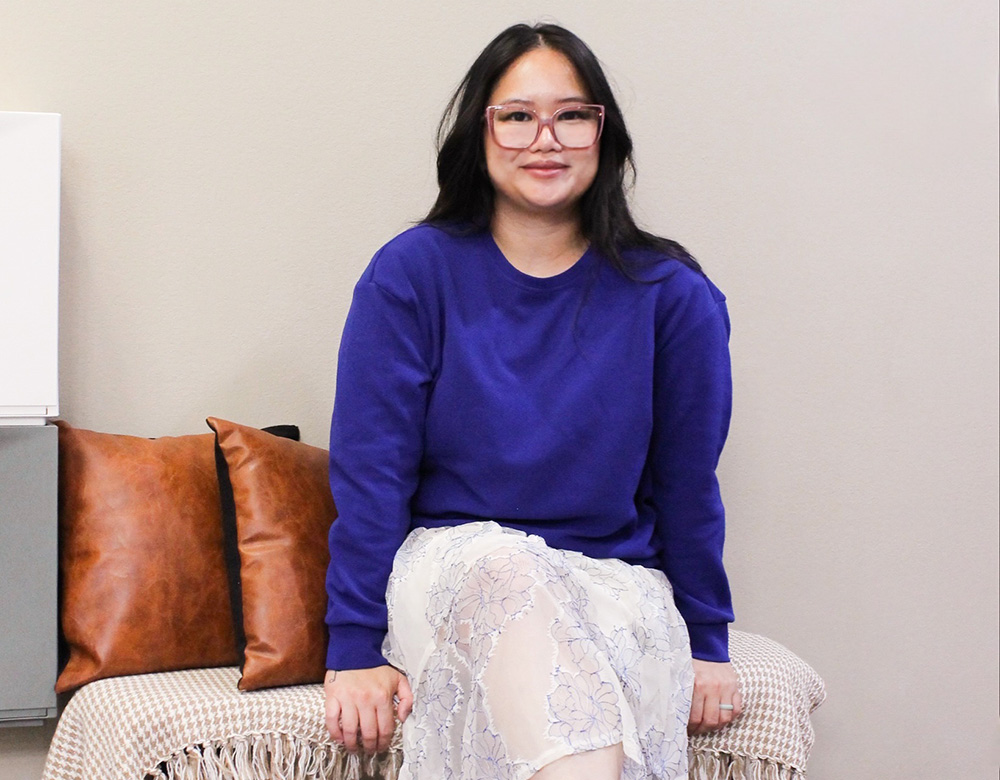
Year of birth: 1989
Describe your art in three words: chaotic, vibrant, decorative
Your discipline: textile art
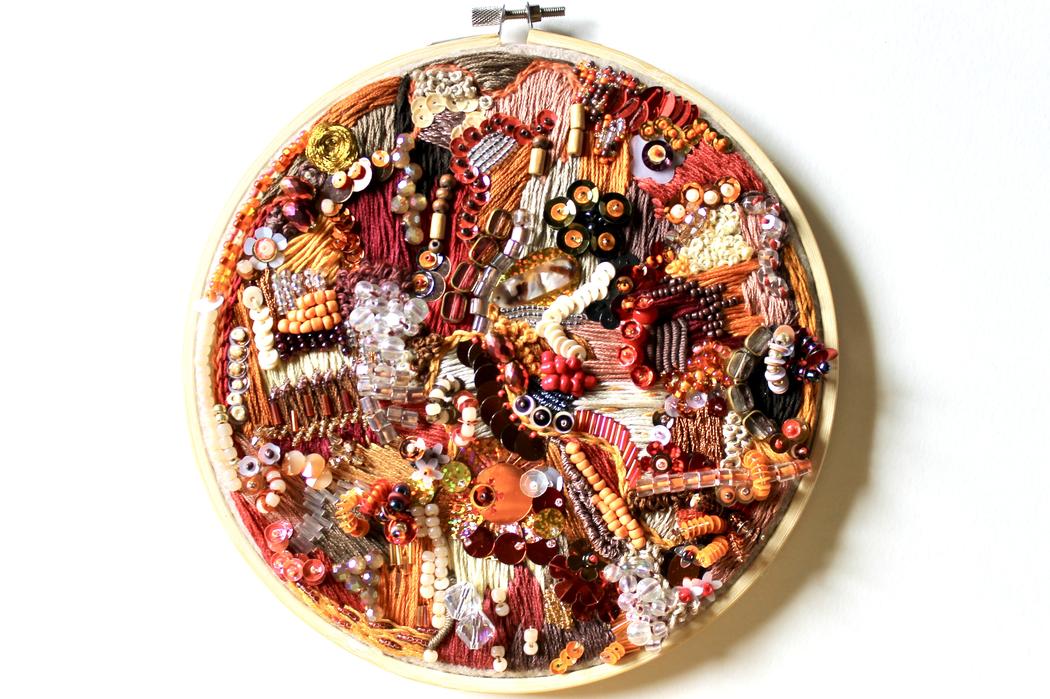 Mia Grosshart | Ember | 2025
Mia Grosshart | Ember | 2025
You grew up around dressmakers and designers. How has that influenced your artistic approach to embroidery and beadwork?
Having witnessed the precision and care put into the craft directly shaped my appreciation for detail. In the early ’90s, I would run around the shop my relatives owned—a unique blend of a boutique, design house, atelier, and alterations is the best way I can describe it. There were sewing machine stations whirring daily and beads/sequins being organized piece by piece until sunset. Various forms of textiles draped over mannequins next to stacks of sketches of wedding gowns, suits, dresses, etc. with measurements scribbled. It sounds chaotic and it was energetic, but I recognized the flow of the process and how everyone understood their timing within it to produce the final product.
Many of your works are vibrant and textured. How do you choose your color palettes and materials?
I personally need to pick a theme to give my scattered ideas direction, otherwise I would have a collection of works in progress. This batch of hoops is for my Color Wheel series where the palette selection highlights a few colors at a time. Hues and vibrancy are also at the forefront of choosing materials to complement the embroidery floss or bead work.
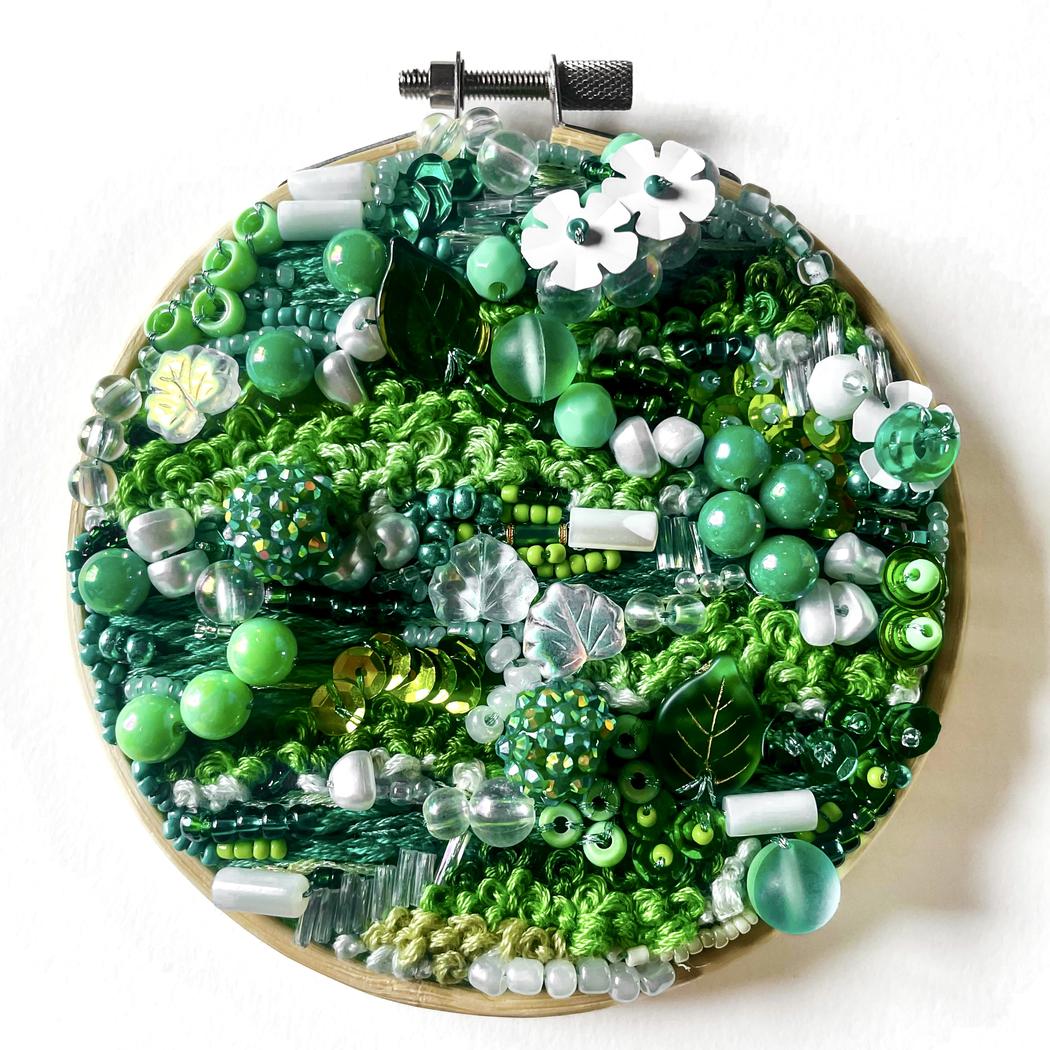 Mia Grosshart | Flora | 2025
Mia Grosshart | Flora | 2025
Your biography mentions moving across states and countries. How does that experience translate into your artistic process?
It has a leading role in the process, giving way to improvements, decision-making, efficiency, and intuition towards my pieces. This was made possible by the experiences and connections I made along the way. Our family was either moving within a state to a different city or house, another state altogether for new opportunities, or for family time in a different country. The variation of local highlights, events, history, lifestyles, native flora and how that has impacted the art disciplines in the area were collectively shaping what I wanted to create.
Do you consider your pieces more sculptural or painterly — or do you see them as something entirely different?
Bit of both. I look for the relationship the textures and color schemes create whether it’s cohesive or in disarray. Building on the flat plane of the taut fabric and understanding the boundaries is my intent and whether I’ll reinterpret the edge to build on it or respect it. The visual or structural limitations of one item is the decision point to add more or use it to highlight other features.
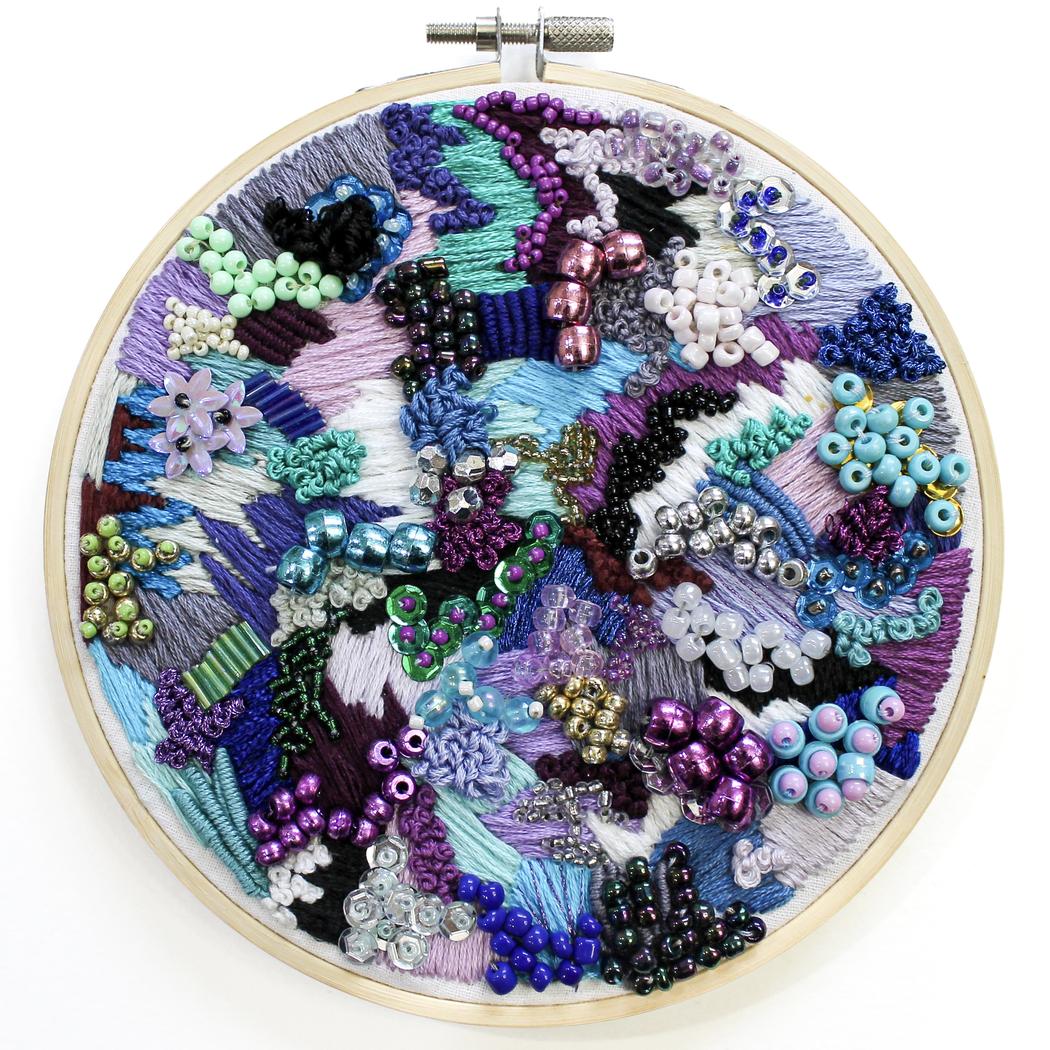 Mia Grosshart | Dusk | 2023
Mia Grosshart | Dusk | 2023
What role does storytelling play in your compositions?
I like how the process creates its own web of stories. The interactions for procuring these items through small businesses, excess supplies, or gifts from friends and family led to late night stitches and scattered materials all around our house. I have memories associated with each one, but it has been interesting to hear the interpretation of others, or the thoughts associated with the overall composition. I want the layers and elements to give consideration to what could work in these spaces.
Can you walk us through your creative process, from the first idea to the final stitch?
The first puncture has consistently been the satin stitch as though it sets my idea in motion to a more permanent state. The final stitch is somewhat of a mini feat to me. It leads into sealing and framing accents closing out the piece. I’m not sure if I have a specific process for everything else in between. The best way I can describe it is through the phases I cycle through which includes contemplating, preparing, production, and validation.
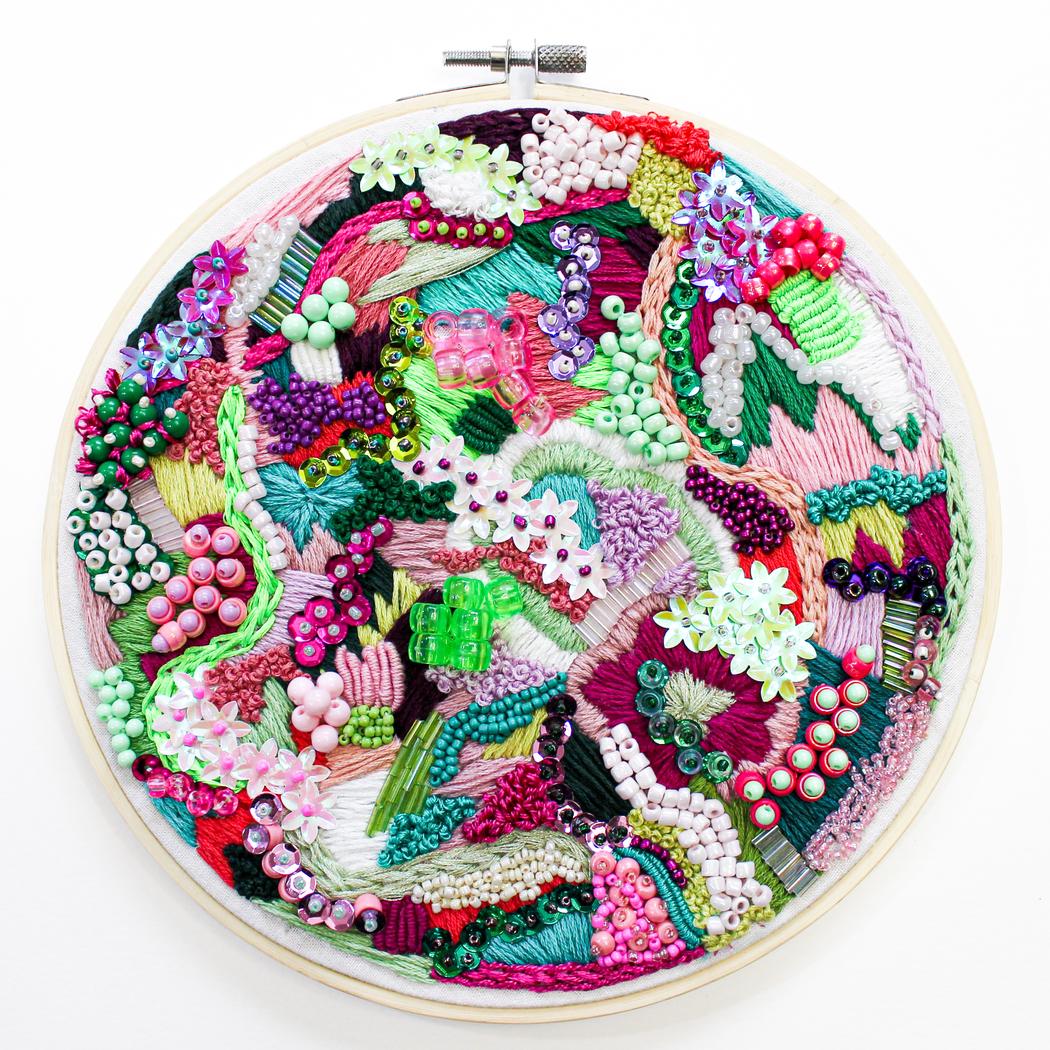 Mia Grosshart | Bloom | 2024
Mia Grosshart | Bloom | 2024
How do you balance traditional techniques with contemporary expression?
My focus between traditional and contemporary constantly shifts to highlight and item or area as much as possible. I have unconventional approaches alongside traditional embroidery stitches. I want to continue appreciating the beauty in both practices.

Leave a Reply